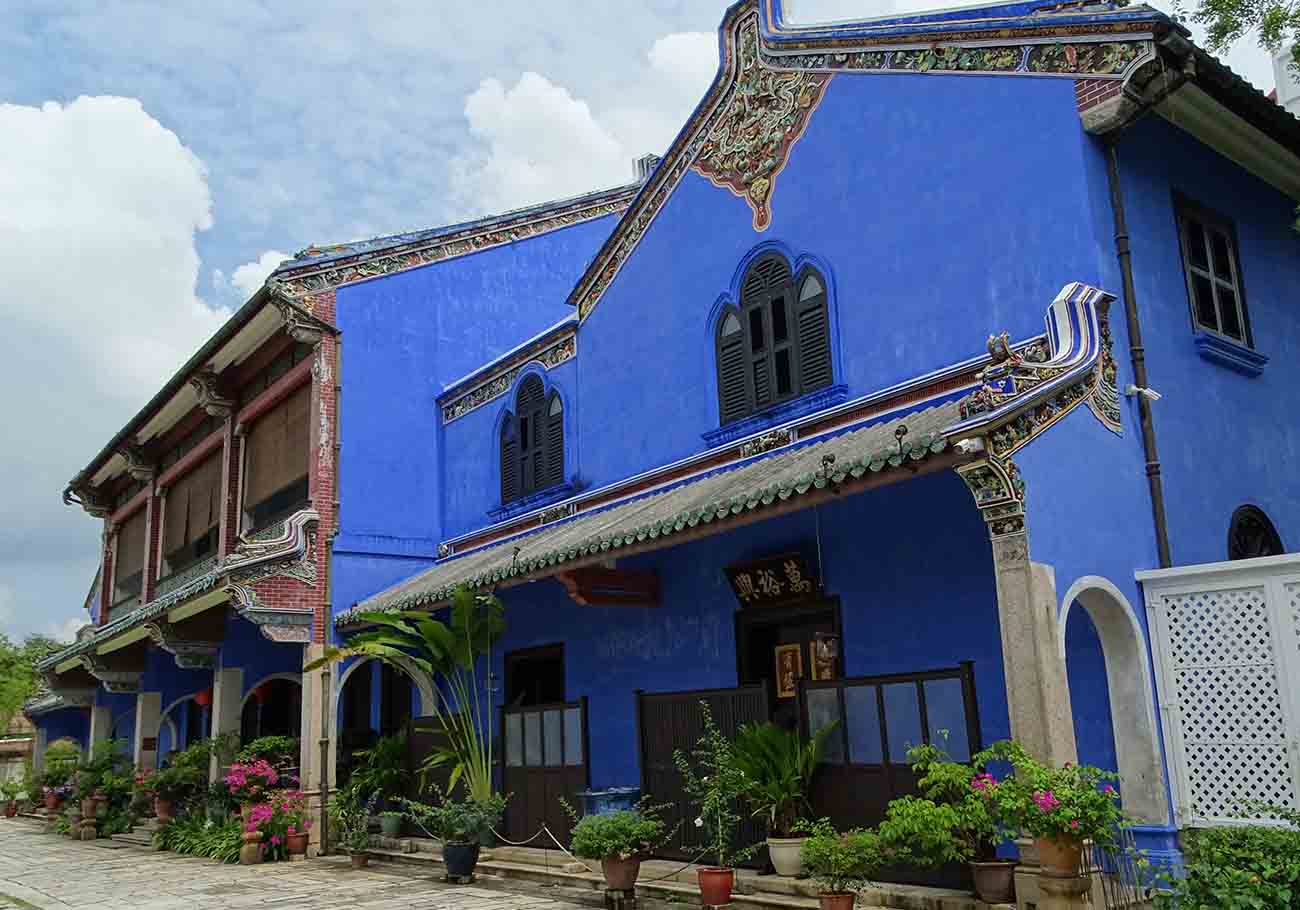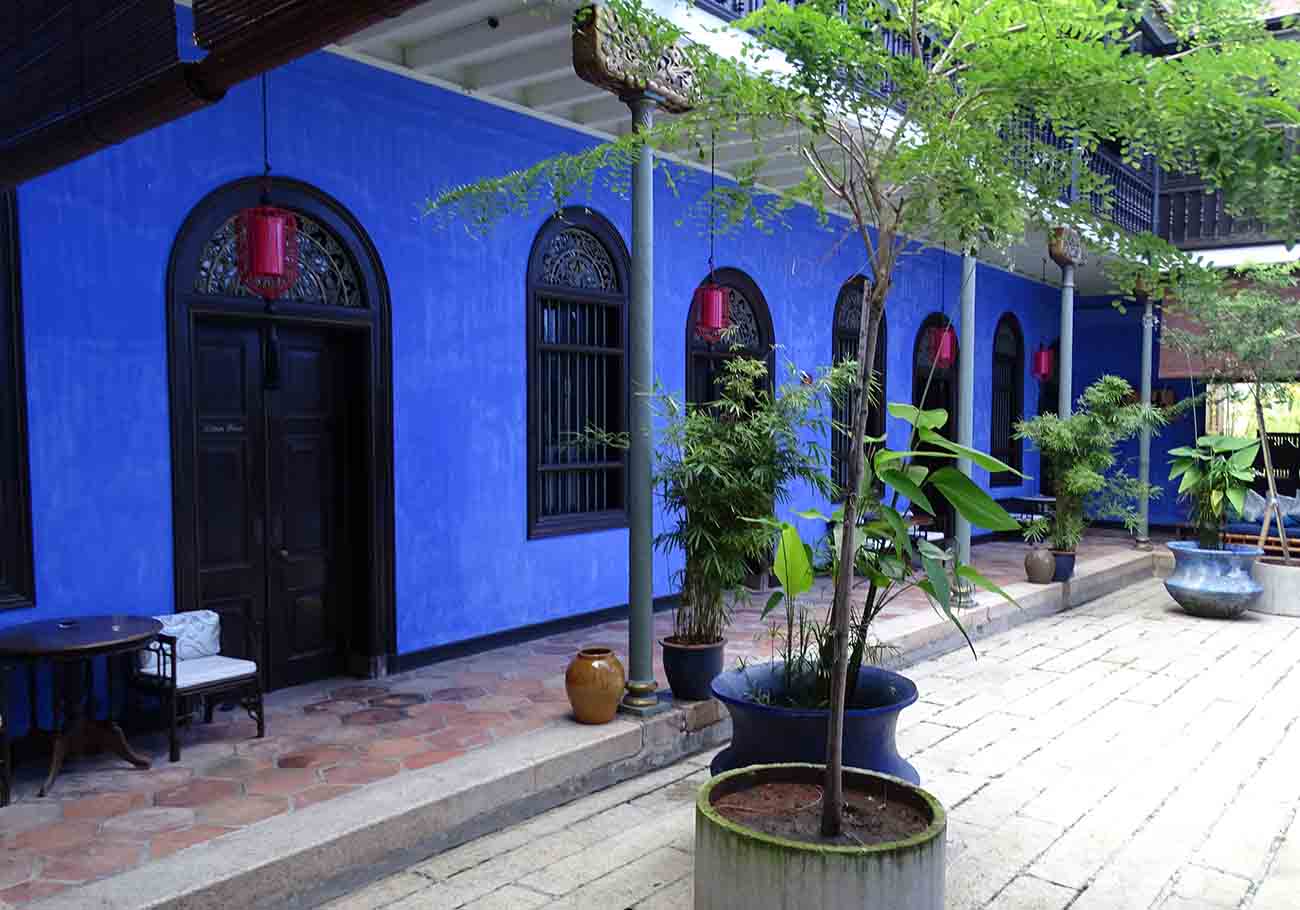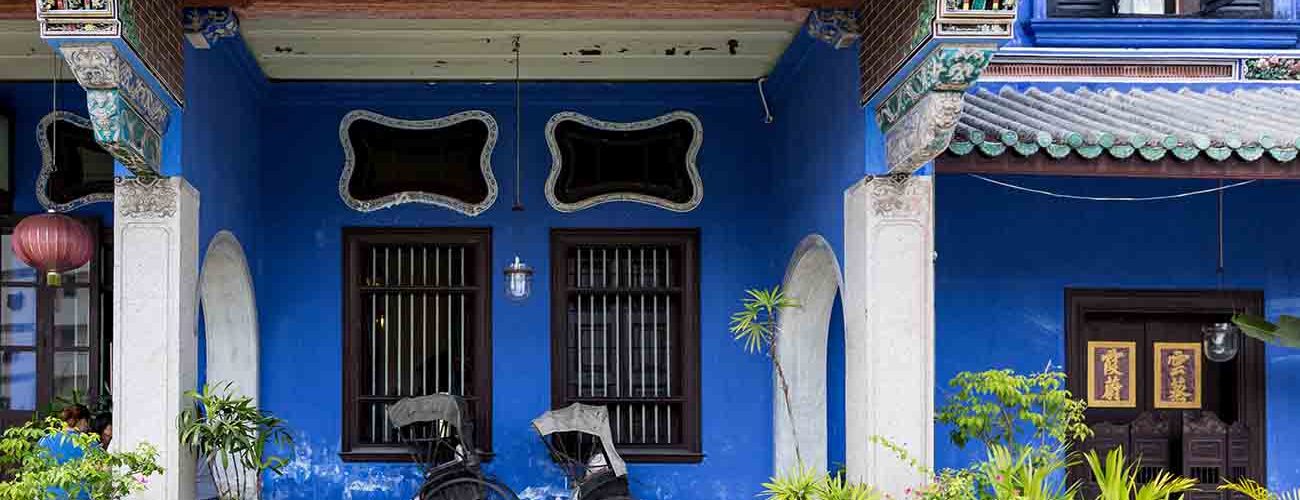
Cheong Fatt Tze Mansion, also known as the Blue Mansion, is a cultural heritage site in Georgetown. The mansion was built in the 19th century by Cheong Fatt Tze, a prominent Chinese businessman and politician, who was often referred to as the “Rockefeller of the East.”
The story of Cheong Fatt Tze is one of rags to riches. Born into poverty in Guangdong, China, he rose to become a powerful industrialist, politician, and Consul-General in Singapore.
The Rockefeller of the East, Cheong Fatt Tze decided to build a palace-like residence in the late 19th century. The impressive structure housing 38 rooms, 7 staircases, 220 windows, and 5 granite courtyards was nothing short of regal.

The Blue Mansion is an exquisite display of Chinese architecture from the 19th century, fusing Western and Eastern elements to create a harmonious balance with its surroundings. With a rich history dating back 3,000 years to the Su Chow dynasty, the Mansion showcases a mix of Hakka and Teochew styles, along with traditional Southern Chinese materials an
Despite its traditional design, The Blue Mansion also reflects the eclectic architectural traits of the 19th century, where the myths and magic of the Chinese Kingdom merged with the grandeur of the British Empire in the Malay world. The mansion also symbolizes Cheong Fatt Tze’s deepening interest in Western craftsmanship and his growing status as a Chinese official.
The mansion is built using traditional feng shui principles, which emphasize the harmonious balance between humans and their environment. The mansion features a central courtyard, which is typical of Chinese houses, and has various areas such as the reception hall, dining hall, bedrooms, and kitchens.

One of the most striking features of the mansion is its blue colour, which is the result of a unique blend of lime and natural blue dye. The blue colour was popular in the 19th century among wealthy Peranakan families, who were of Chinese descent but had adopted the local customs and culture of the Malay archipelago.
The reception hall of the mansion is grand and spacious, with ornate decorations and intricate carvings. The dining hall is equally impressive, with a long wooden table and chairs made from a single piece of wood. The bedrooms are located on the upper floor and are decorated with traditional Chinese furnishings.
The mansion also has a courtyard garden, which is a serene oasis in the middle of the bustling city. The garden is filled with tropical plants, a lotus pond, and a wooden bridge that leads to a pavilion.

Cheong Fatt Tze passed away on September 11, 1916, in Jakarta due to pneumonia. Many nations and authorities celebrated his life, and on the day of his death, the British and Dutch lowered their flags to half-mast as a sign of respect. Cheong Fatt Tze’s legacy is still alive today through the grandeur of The Blue Mansion, which is an important part of Penang’s history and culture.
Laurence Loh, a Penang architect, purchased the Blue Mansion in 1990. It then underwent restoration efforts that took years. The Blue Mansion is now a heritage museum and boutique hotel. In the year 2000, it won UNESCO’s Asia-Pacific Heritage Award for Cultural Heritage Conservation.
The mansion is a testament to the wealth and influence of Cheong Fatt Tze, a self-made man who played an important role in the politics and development of the region. In addition to its cultural significance, the Blue Mansion is also an excellent example of sustainable tourism.









